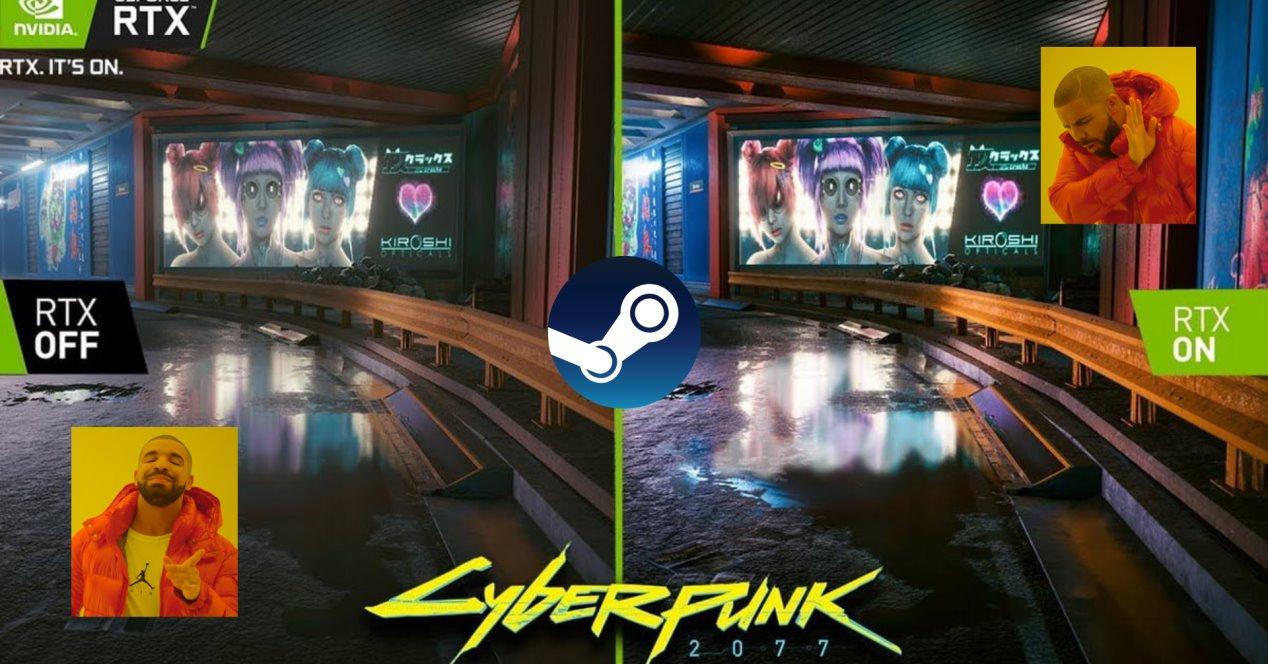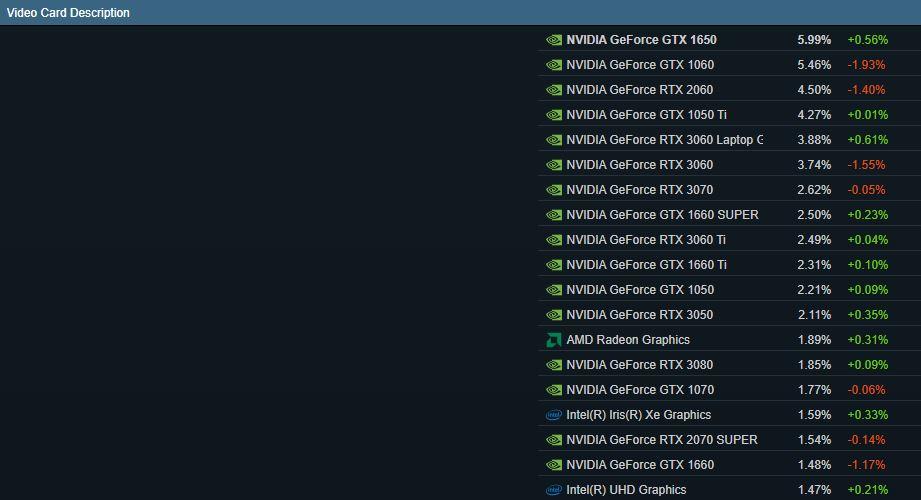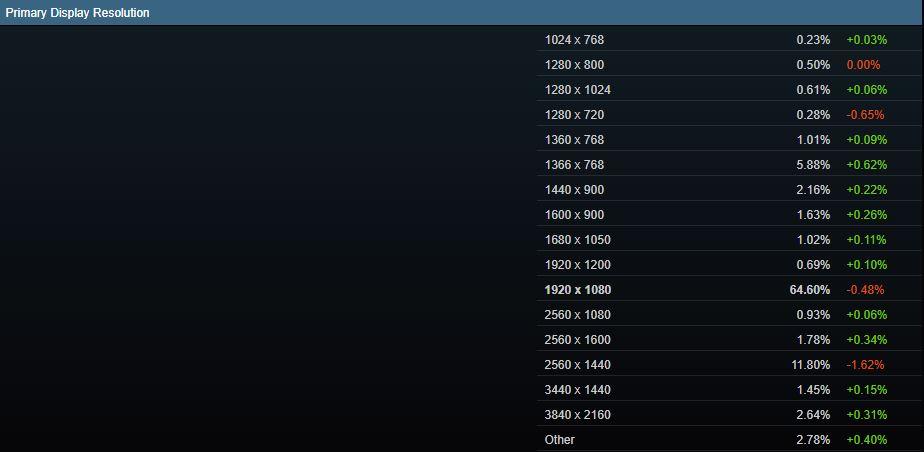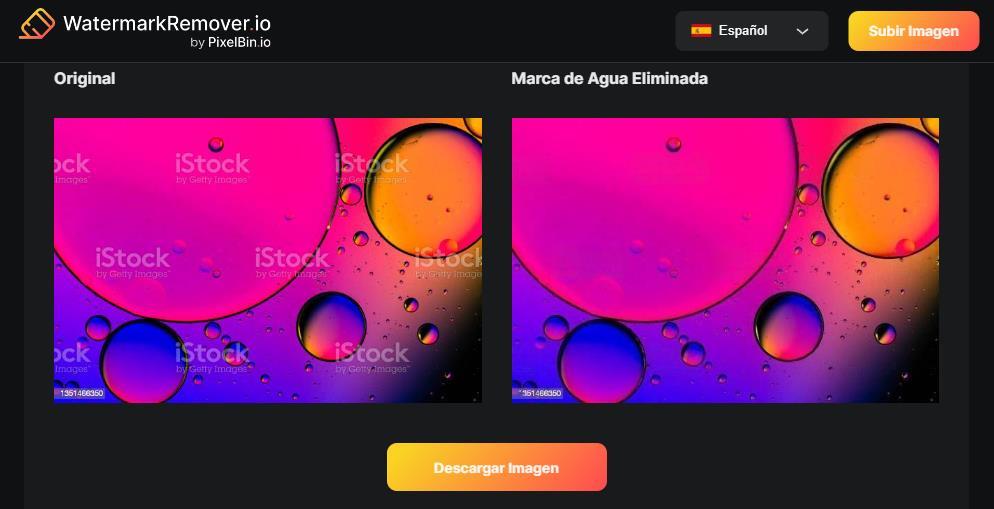
Regarding Steam statistics, we must keep one thing in mind. Even if you are 5 years without accessing your Steam account, your system data counts. This means that the statistics are not 100% real, but rather there is a small distortion of the data with users who have not connected to their account for a long time.
Quite interesting data that Steam gives us
There are several interesting data from the Steam hardware statistics for the month of December. The first thing that stands out is the strength that has picked up the NVIDIA GTX 1650 to the detriment of the GTX 1060, which for a long time was the graphics card most used by the community. It seems that users are upgrading and the priority option is the GTX 1650 for its adjusted price.
We see how in the Top 3 is the RTX 2060, Launched on the market in January 2019 and can be found at a good price. But also in the Top 5 we find the RTX 3060 Laptop, which is the laptop version of the RTX 3060. The curious thing is that the laptop model has surpassed the desktop model, with the RTX 3060 registering a 1.55% drop in presence, which is outrageous.
As always, the AMD presence in statistics is really limited. AMD’s first model is the RX 580followed by a Vegas 8 (integrated graphics in Ryzen processors) and the RX 570. To find the first RDNA graph we have to go down a lot and it is the RX 5700XT. Although we have something called AMD Radeon Graphics quite high up, it is impossible to know which model that data refers to.
In addition, the Steam statistics leave us another interesting fact: the most common resolution. Most users continue to play on 1080p resolutionspecifically the 64.6% of users, although it registers a fall of almost 0.5%. Next we have the 1440p resolutionwith a little more than 11% of users. We are struck by the 1366 x 768 resolution with about 6% share and an increase of more than 0.6%. The reason for the use of this resolution would be in CS:GO, since this resolution increases the size of the “monigotes” and allows to increase the precision.
Little Ray Tracing and “cheap”
Although Ray Tracing is a more than interesting technology to increase the realism of games, it brings with it problems. The FPS drop from this technology is significant and the solution is a “compensation”. For compensation, NVIDIA DLSS is used, which allows to balance the loss of performance and requires dedicated hardware. AMD does this with FSR, but without the need for dedicated hardware.
Speaking in terms of NVIDIA graphics, Ray Tracing involves the inclusion of RT Cores and Tensor Cores, the latter for DLSS. Two elements that imply a high cost of hardware, making it inaccessible to most users. Hence, the models from before ray tracing or entry-level and mid-range models, from previous generations, which are cheaper, triumph.
The price is not the only problem of these two technologies. The inclusion of new specific cores for these tasks means a large increase in consumption. Added to this the inclusion of a new power connector that almost requires changing the power supply, we are faced with costs that either the user does not want to assume or cannot assume.





